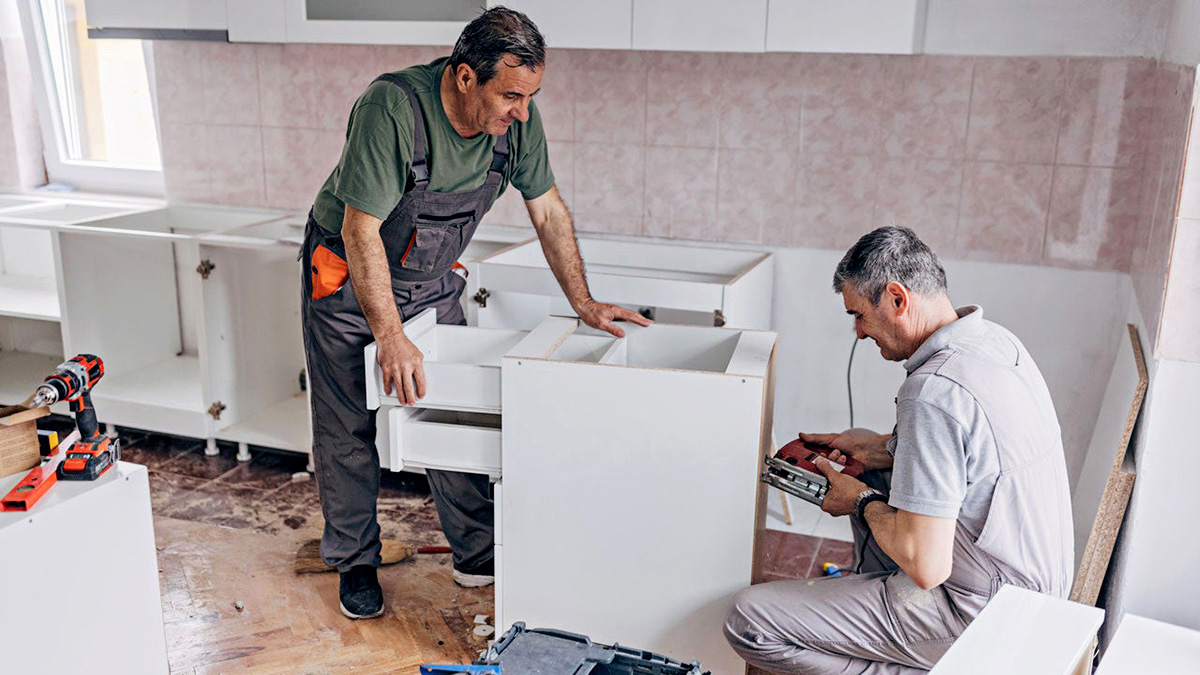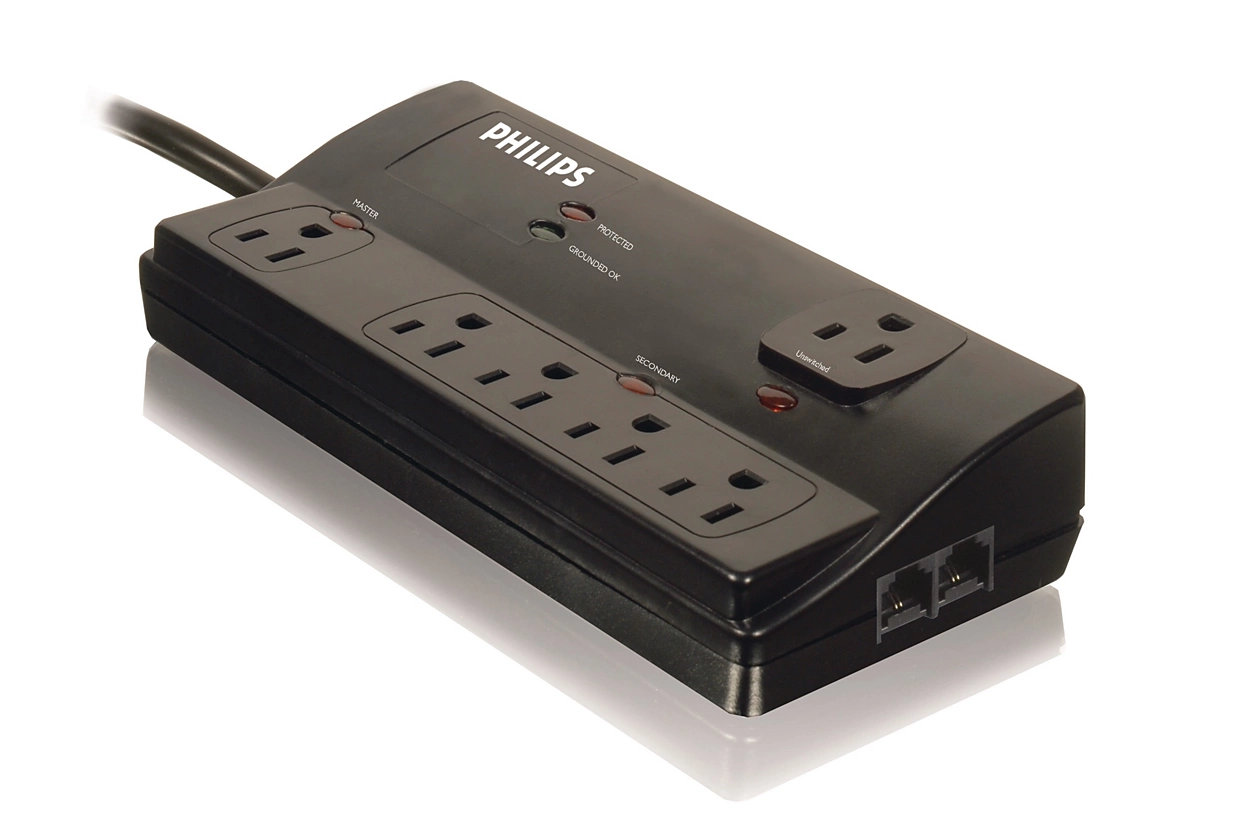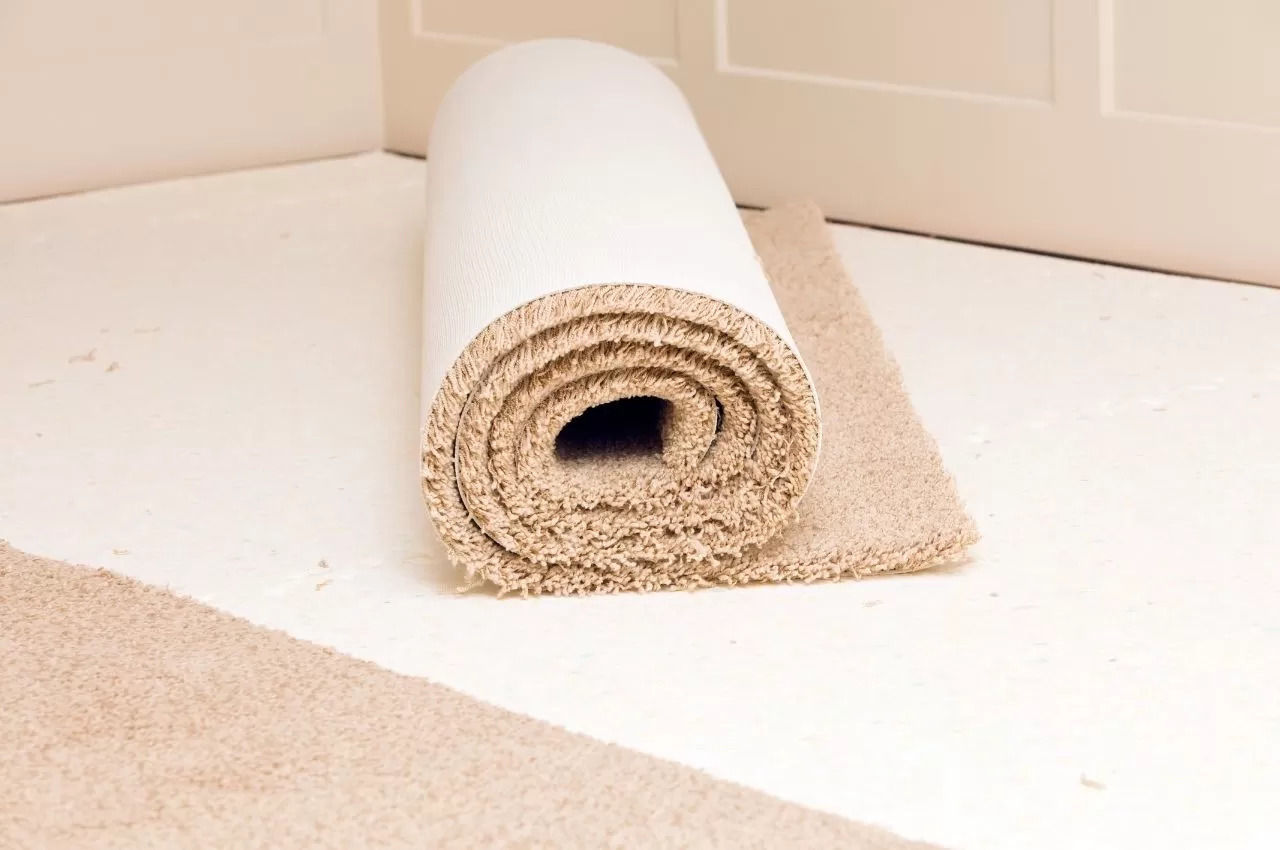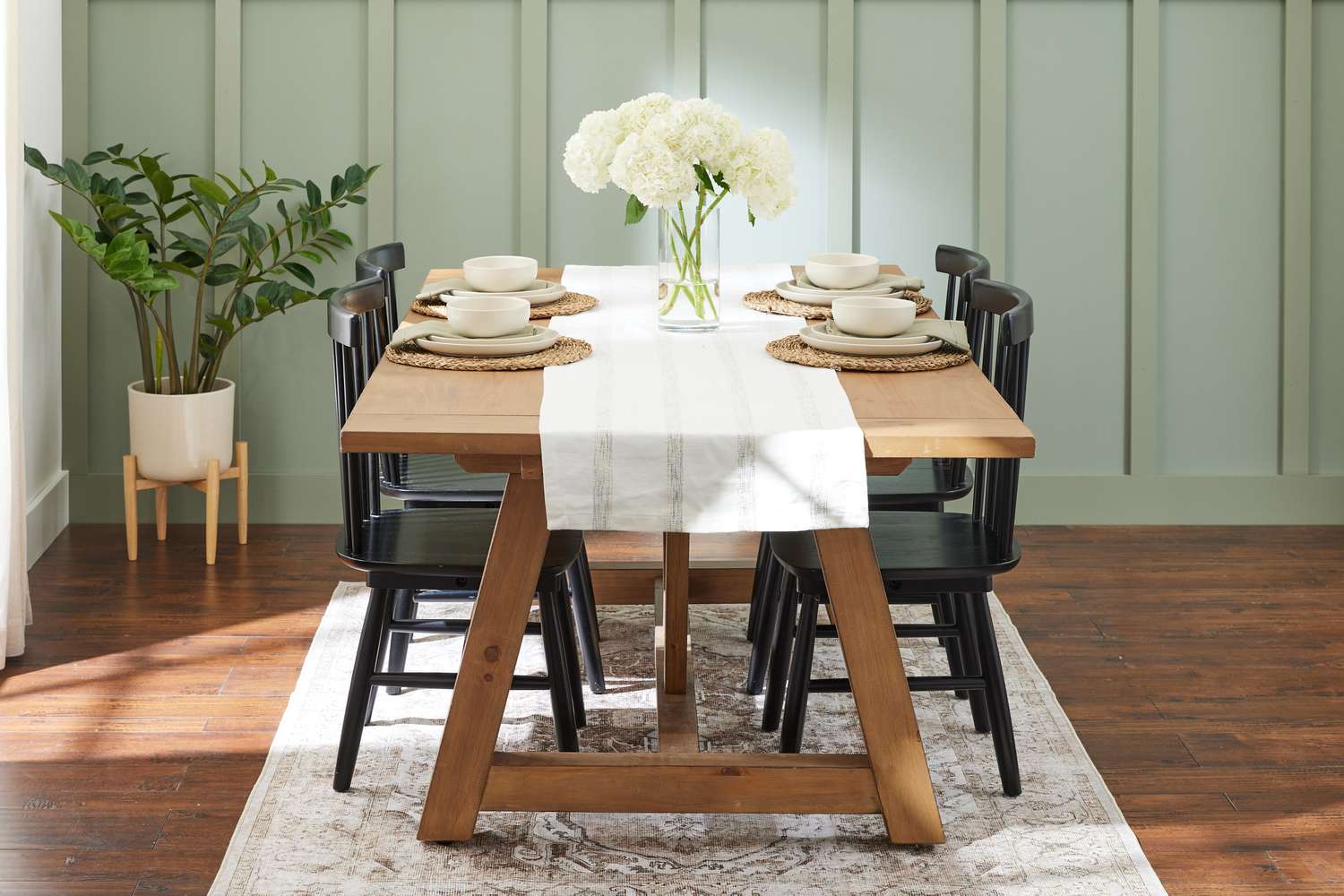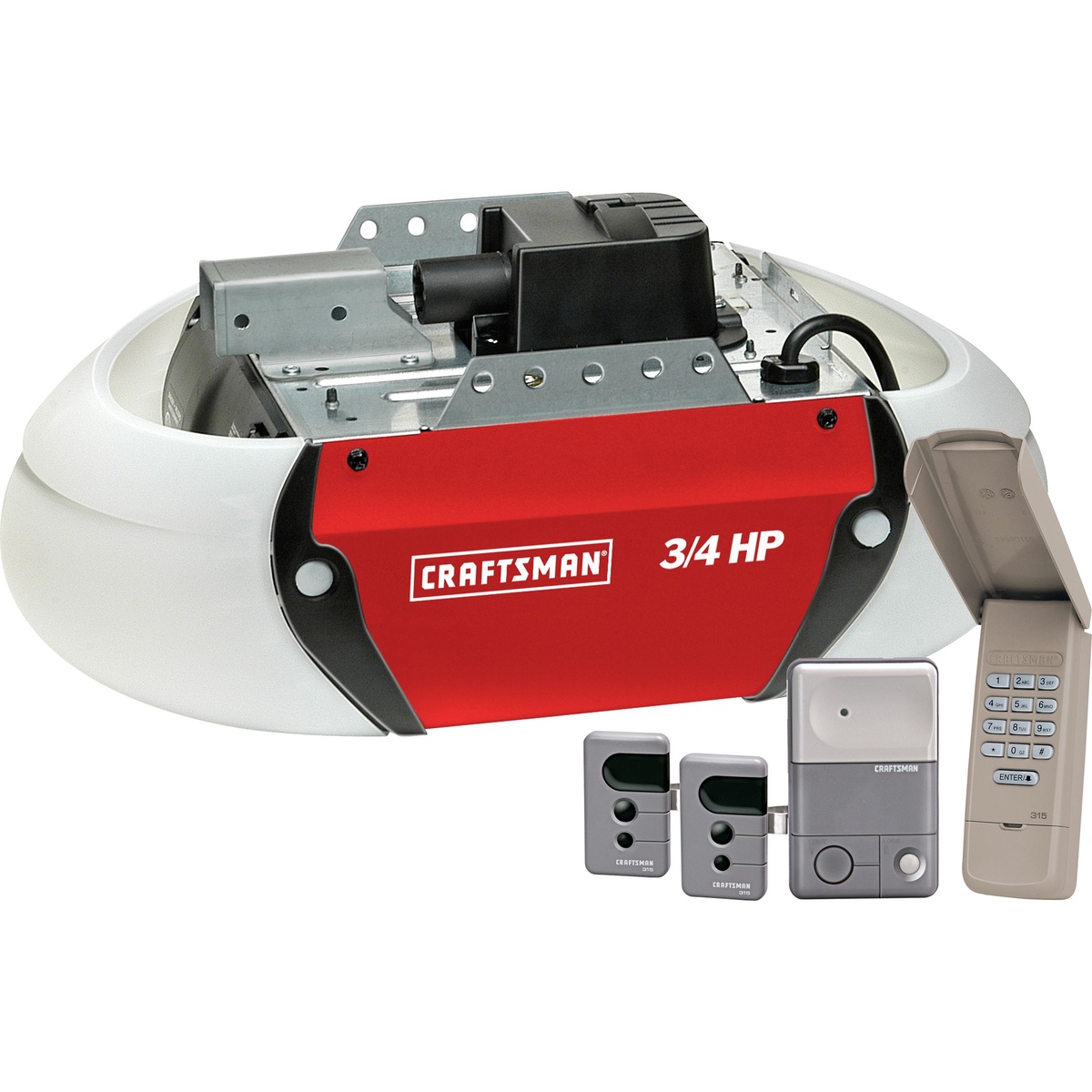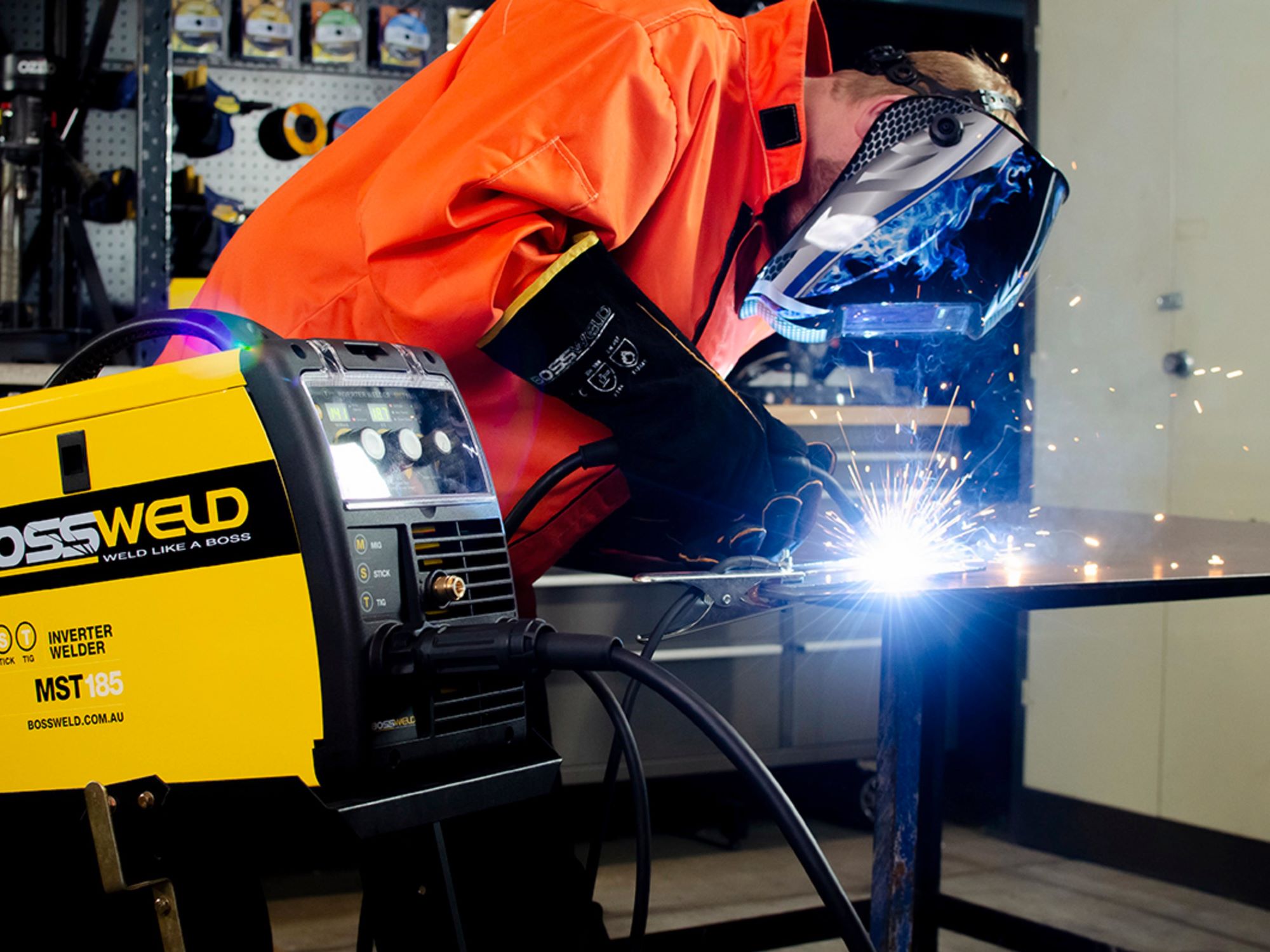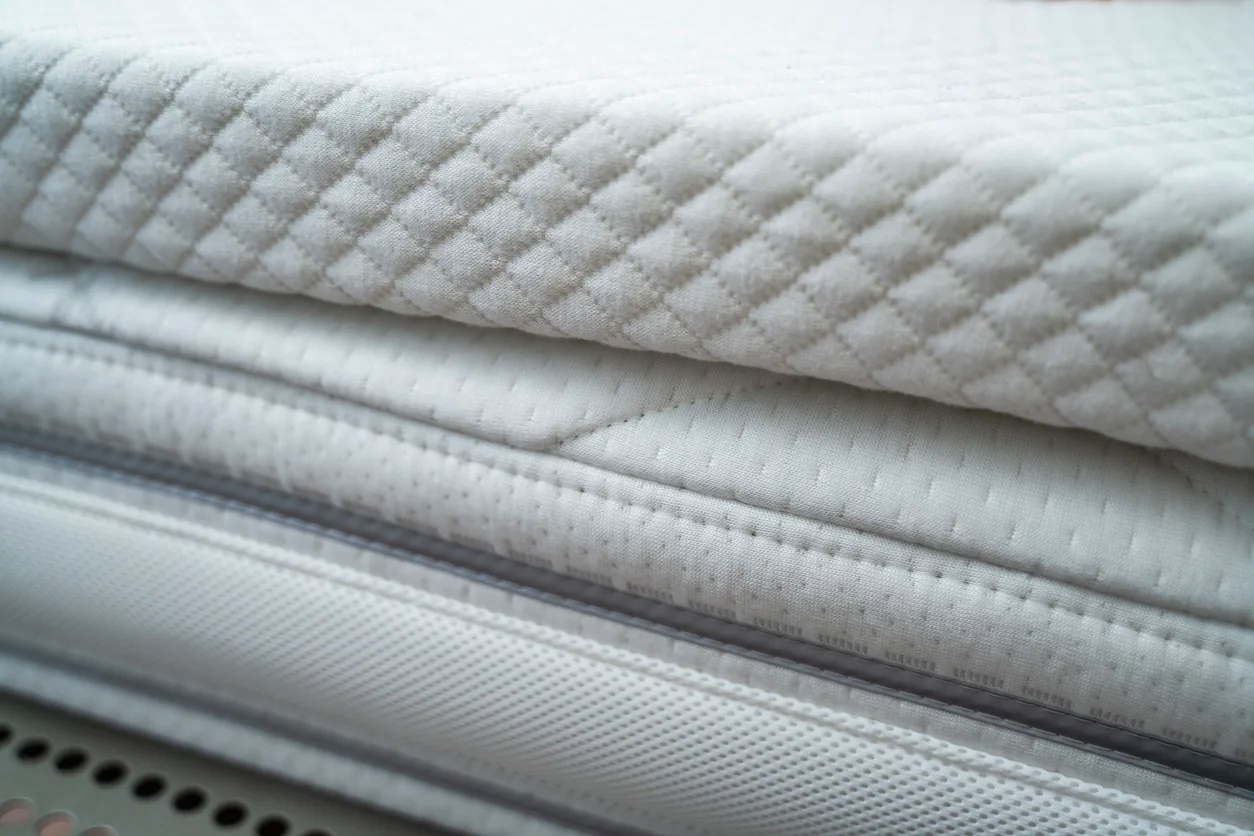Home>Home Maintenance>Property & Home Valued $140,000: What Kind Of Mortgage Should I Get For Home Repair
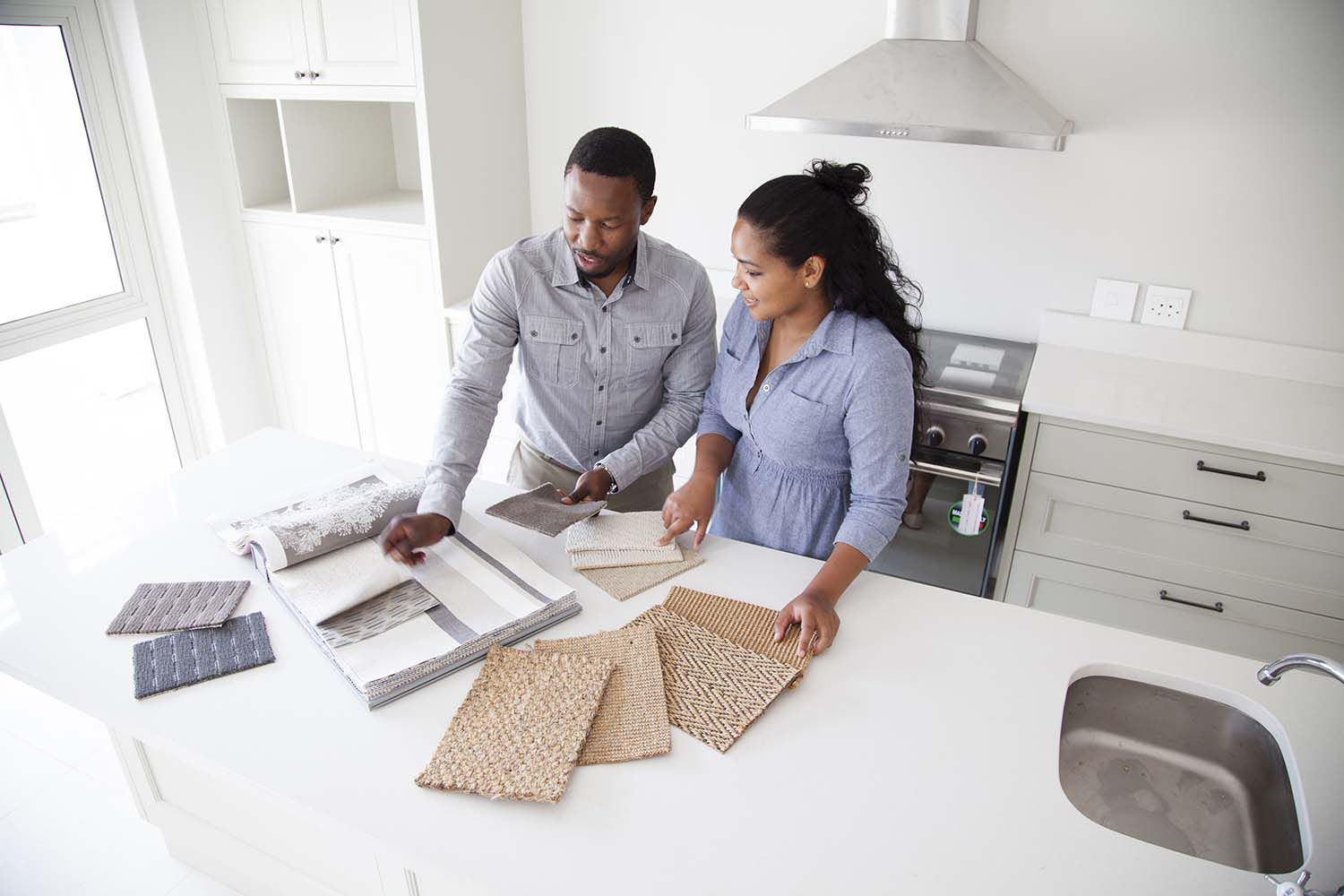

Home Maintenance
Property & Home Valued $140,000: What Kind Of Mortgage Should I Get For Home Repair
Modified: March 6, 2024
Learn the best mortgage options for home repairs on your valuable property worth $140,000. Find out how to finance your essential maintenance and renovations with our expert advice.
(Many of the links in this article redirect to a specific reviewed product. Your purchase of these products through affiliate links helps to generate commission for Storables.com, at no extra cost. Learn more)
Introduction
When you own a property or home valued at $140,000, it’s important to ensure that it remains in good condition. Over time, wear and tear can take a toll, and repairs may become necessary to maintain its value and functionality. However, financing these repairs can be a daunting task, especially if you don’t have readily available funds. In such cases, getting a mortgage for home repair can be a viable option.
Before delving into the different types of mortgages available for home repair, it’s crucial to understand the value of your property and home. The overall value will play a crucial role in determining the type and amount of mortgage you can qualify for.
Factors such as the location of your property, the size, the condition, and any additional features it may have will contribute to its value. Additionally, factors such as the current real estate market conditions and the demand for properties in your area will also impact its value.
Once you have a good understanding of your property’s value, you can then consider the factors you need to take into account before getting a mortgage for home repair.
One of the key factors to consider is the extent of the repairs needed. Assess the overall condition of your property and identify any major repairs that are essential for its maintenance and functionality. This will help you determine the amount of financing you require.
Another factor to consider is your financial situation. Assess your income, credit score, and debt-to-income ratio to ensure that you are in a position to take on a mortgage for home repair. Lenders will evaluate your financial situation to determine your eligibility and the terms of the mortgage.
Additionally, it’s important to consider the interest rates and loan terms associated with different mortgages. Different types of mortgages have varying interest rates and repayment conditions, and it’s crucial to evaluate them before making a decision.
Now that we have a better understanding of the value of your property and the factors to consider, let’s explore the different types of mortgages available for home repair. Understanding these options will help you make an informed decision that best suits your needs and financial situation.
Key Takeaways:
- When considering a mortgage for home repair, assess your property’s value, the extent of repairs needed, and your financial situation. Compare different mortgage options based on interest rates, loan terms, and eligibility criteria to make an informed decision.
- Carefully consider factors such as affordability, loan amounts, fees, and repayment schedules when choosing a mortgage for home repair. Seek professional guidance and weigh the pros and cons of each option to ensure it aligns with your financial goals.
Understanding the Value of the Property and Home
Before applying for a mortgage for home repair, it’s important to have a clear understanding of the value of your property and home. The value of a property is determined by various factors, and having this knowledge will help you determine the financing options available to you.
One of the main factors that influences the value of a property is its location. Properties located in desirable neighborhoods with good schools, amenities, and low crime rates tend to have higher values. On the other hand, properties in less desirable areas may have lower values, even if they are similar in size and condition.
The size and condition of your property also have a significant impact on its value. Larger properties with more square footage generally have higher values. Additionally, properties that are well-maintained and in good condition will fetch a higher price in the market.
Features and amenities can also influence the value of a property. These can include things like upgraded kitchens and bathrooms, hardwood floors, swimming pools, and outdoor living spaces. The presence of such features can increase the attractiveness and value of your property.
Real estate market conditions also play a role in determining property values. In a seller’s market, where demand outweighs supply, property values tend to rise. Conversely, in a buyer’s market, where supply exceeds demand, property values may decrease.
To get an accurate estimate of your property’s value, you can consider getting a professional appraisal. Appraisers will analyze various factors such as the property’s location, size, condition, and recent sales data of comparable properties in the area. They will then provide a valuation based on these assessments.
Understanding the value of your property is crucial as it can affect the amount of financing you can qualify for. Lenders will consider the value of your property when determining loan-to-value ratios and the maximum amount they are willing to lend. Generally, lenders will be more willing to offer larger loan amounts for properties with higher values.
Having a clear understanding of your property’s value will help you determine the amount of financing you require for home repairs. It will also allow you to explore different financing options and choose the one that best fits your needs and financial situation.
Factors to Consider Before Getting a Mortgage for Home Repair
Before you jump into getting a mortgage for home repair, there are a few important factors to consider. These factors will help you determine whether taking on a mortgage is the right choice for your specific situation.
1. The extent of repairs needed: Assess the overall condition of your property and identify the repairs that are necessary. Determine whether the repairs are minor, such as fixing a leaky faucet, or major, such as replacing the roof. Understanding the extent of repairs needed will help you determine the financing amount required.
2. Your financial situation: Take a close look at your financial situation to determine if you are in a position to take on a mortgage. Evaluate your income, credit score, and debt-to-income ratio. Lenders will review these factors to assess your eligibility and determine the terms of the mortgage.
3. Interest rates and loan terms: Different types of mortgages offer varying interest rates and loan terms. It’s crucial to evaluate these options and understand the financial implications of each. Compare the interest rates, repayment schedules, and any associated fees of different mortgage products to make an informed decision.
4. Monthly payment affordability: Consider your monthly budget and determine how much you can comfortably afford to pay towards your mortgage. Make sure to factor in not only the mortgage payment but also any other ongoing expenses such as property taxes, insurance, and maintenance costs.
5. Long-term plans: Consider your long-term plans for the property. Are you planning to sell it in the near future or hold onto it for a longer period of time? Understanding your plans will help you determine the most suitable mortgage option.
6. Additional financing options: Explore other financing options available for home repairs. Consider personal loans, lines of credit, or even tapping into your home equity. Compare these options with getting a mortgage and weigh the pros and cons of each.
7. Future financial goals: Consider how taking on a mortgage for home repairs aligns with your future financial goals. Will it impact your ability to save for retirement, education, or other important milestones?
By carefully considering these factors, you can make an informed decision about whether getting a mortgage for home repair is the right choice for you. Keep in mind that each individual’s financial situation is unique, and what works for one person may not work for another. Take the time to evaluate your needs, goals, and financial capabilities before proceeding with a mortgage for home repair.
Types of Mortgages Available for Home Repairs
When it comes to financing home repairs, there are several types of mortgages available. Understanding these options will help you choose the one that best suits your needs and financial situation. Let’s explore some of the most common types of mortgages for home repairs:
1. Conventional Fixed-Rate Mortgage: This is the most popular type of mortgage for home repairs. With a conventional fixed-rate mortgage, you borrow a specific amount of money at a fixed interest rate, and you repay it over a predetermined period. This option offers stability and predictability, as your monthly payments remain the same throughout the loan term.
2. Adjustable-Rate Mortgage (ARM): An adjustable-rate mortgage is another option to consider. With an ARM, your interest rate is initially fixed for a certain period, typically 5, 7, or 10 years, and then it adjusts periodically based on market conditions. This type of mortgage may offer lower initial interest rates, but it carries the risk of potential rate increases in the future.
3. FHA 203(k) Rehabilitation Loan: If you’re planning extensive repairs or renovations, an FHA 203(k) loan may be a suitable option. This government-backed loan program allows you to finance both the purchase of a property and the cost of repairs or renovations. The loan amount is based on the projected value of the property after repairs, making it a great choice for fixer-upper properties.
4. Home Equity Loan: If you have significant equity in your home, a home equity loan may be an option. With a home equity loan, you borrow a lump sum against the equity you have built in your property. The loan is repaid over a fixed term with a fixed interest rate. This type of loan can be a good choice if you have a specific amount in mind for your home repairs.
5. Home Equity Line of Credit (HELOC): Similar to a home equity loan, a HELOC allows you to borrow against the equity in your home. However, a HELOC provides a line of credit that you can draw from as needed, rather than a lump sum. You can borrow and repay the funds as you wish, and you only pay interest on the withdrawn amount. This flexibility makes a HELOC a suitable option for ongoing or unpredictable home repair expenses.
When choosing a mortgage for home repairs, consider factors such as your financial situation, the extent of the repairs, and your long-term plans for the property. It’s also important to thoroughly research and compare the terms, interest rates, and fees of each option. Consulting with a mortgage professional can help you determine the best course of action based on your specific needs.
Remember, each type of mortgage has its advantages and disadvantages, so take the time to weigh the pros and cons before making a decision. Ultimately, selecting the right mortgage will ensure you have the necessary funds to repair and maintain your home.
Conventional Fixed-Rate Mortgage
A conventional fixed-rate mortgage is one of the most popular options for financing home repairs. With this type of mortgage, you borrow a specific amount of money at a fixed interest rate and repay it over a predetermined period. This option offers stability and predictability, making it a preferred choice for many homeowners.
One of the main advantages of a conventional fixed-rate mortgage is the fixed interest rate. This means that your interest rate remains the same throughout the loan term, regardless of market fluctuations. Having a consistent interest rate allows you to plan your budget effectively, as your monthly payments will stay unchanged.
Another benefit of a conventional fixed-rate mortgage is the flexibility it offers. You can choose from various loan terms, typically ranging from 15 to 30 years. Shorter loan terms usually come with lower interest rates but higher monthly payments. On the other hand, longer loan terms offer lower monthly payments but may result in paying more interest over time. Selecting the right loan term depends on your financial situation and preferences.
Qualifying for a conventional fixed-rate mortgage requires meeting certain criteria. Lenders typically consider factors such as credit score, income, employment history, and debt-to-income ratio. A higher credit score and lower debt-to-income ratio increase your chances of getting approved for a competitive interest rate.
When using a conventional fixed-rate mortgage for home repairs, it’s essential to accurately assess the total cost of the repairs and include them in your mortgage amount. This way, you can ensure you have sufficient funds to complete the necessary renovations or repairs.
It’s also important to note that conventional mortgages often require a down payment, typically ranging from 3% to 20% of the purchase price or appraised value of the property. The down payment amount depends on factors such as your creditworthiness, the loan-to-value ratio, and the specific requirements of the lender.
Before committing to a conventional fixed-rate mortgage, it’s wise to shop around and compare offers from different lenders. This allows you to obtain multiple loan estimates, compare interest rates, and evaluate any associated fees. Working with a mortgage professional can help simplify the process and ensure you find the best mortgage terms for your needs.
It’s important to keep in mind that defaulting on a conventional fixed-rate mortgage can result in foreclosure, leading to the loss of your home. Therefore, it’s crucial to carefully consider your financial situation and ensure that you can comfortably afford the monthly payments before taking on this type of mortgage for home repairs.
A conventional fixed-rate mortgage offers stability, predictability, and the opportunity to finance home repairs over a predetermined period. When considering this option, evaluate your financial situation, compare lenders, and choose the loan term that best fits your needs. With proper planning and understanding, a conventional fixed-rate mortgage can provide the necessary funds to enhance and maintain your home.
Adjustable-Rate Mortgage (ARM)
An adjustable-rate mortgage (ARM) is a type of mortgage that offers an alternative to the conventional fixed-rate mortgage. With an ARM, the interest rate is initially fixed for a certain period, typically 5, 7, or 10 years, and then it adjusts periodically based on market conditions. This option can be suitable for homeowners who expect changes in their financial situation or plan to sell the property within a few years.
One of the main advantages of an adjustable-rate mortgage is the potentially lower initial interest rate compared to a fixed-rate mortgage. This lower rate can result in lower monthly payments during the initial fixed-rate period, making it more affordable for borrowers in the short term.
During the fixed-rate period, the interest rate remains constant, providing stability and predictability for homeowners. However, once the fixed-rate period ends, the interest rate adjusts periodically based on an index, such as the London Interbank Offered Rate (LIBOR) or the Constant Maturity Treasury (CMT) rate, plus a predetermined margin set by the lender. The adjustment frequency and caps on rate changes vary depending on the specific ARM product.
It’s important to note that the adjusted rate can either increase or decrease. If market rates rise, your monthly payments may increase, potentially impacting your budget. Conversely, if rates decline, your monthly payments may decrease. The volatility of market rates makes it crucial to carefully consider your financial capacity to handle potential rate increases.
When considering an ARM for financing home repairs, it’s important to evaluate your future plans for the property. If you anticipate selling the property or refinancing before the fixed-rate period ends, an ARM can be a cost-effective option. However, if you plan to stay in the home for an extended period, it’s important to consider the potential changes in interest rates and their impact on your monthly payments.
Qualifying for an ARM follows similar criteria as other mortgage types, including factors such as credit score, income, employment history, and debt-to-income ratio. Lenders will assess your financial situation to determine your eligibility and the specific terms of the loan.
Before choosing an ARM, it’s crucial to understand the specifics of the loan, including the adjustment periods, caps, and lifetime limits on interest rate changes. Familiarize yourself with the terms and conditions outlined by the lender and seek clarification on any uncertainties.
It’s important to carefully weigh the benefits and risks of an ARM when considering it for home repairs. While the initial lower interest rates can offer short-term affordability, the potential for rate adjustments in the future can introduce uncertainty. Assess your financial goals, tolerance for risk, and plans for the property to determine if an ARM aligns with your unique situation.
Consulting with a mortgage professional can provide valuable guidance and insight into the pros and cons of an adjustable-rate mortgage. Their expertise can help you make a well-informed decision that suits your specific needs and financial goals.
Consider a home equity loan or line of credit to finance repairs. These use your home’s value as collateral and typically offer lower interest rates than personal loans.
FHA 203(k) Rehabilitation Loan
The FHA 203(k) Rehabilitation Loan is a government-backed loan program designed to help homeowners finance both the purchase of a property and the cost of necessary repairs or renovations. This loan option is ideal for individuals looking to purchase a fixer-upper or improve their current home.
One of the key advantages of the FHA 203(k) loan is that it allows borrowers to finance both the purchase price and the cost of repairs or renovations into a single loan. This eliminates the need for homeowners to secure multiple loans or use their personal savings to cover the expenses. It offers a streamlined and convenient way to fund home repairs or transform a property into the dream home.
There are two types of FHA 203(k) loans available: the Limited 203(k) loan and the Standard 203(k) loan.
The Limited 203(k) loan is designed for less extensive repairs or renovations that do not require structural changes. This loan has a maximum loan amount and is typically used for projects such as replacing kitchen appliances, installing new flooring, or updating plumbing and electrical systems.
The Standard 203(k) loan is suitable for more extensive repairs, including structural changes, room additions, or major renovations. This loan allows for higher loan amounts, making it ideal for significant home improvement projects.
When applying for an FHA 203(k) Rehabilitation Loan, borrowers need to work with an FHA-approved lender who will assess the property’s value both before and after the repairs. The lender will determine the loan amount based on the projected post-repair value, ensuring that borrowers receive the necessary funds to complete the proposed renovations.
It’s important to note that FHA 203(k) loans have specific requirements and guidelines. Borrowers must meet certain criteria, including a minimum credit score, a down payment, and an appraisal process that considers the expected value of the property after repairs. The property itself must also meet certain standards set by the U.S. Department of Housing and Urban Development (HUD).
An FHA 203(k) Rehabilitation Loan can be a great option for homeowners who want to turn a fixer-upper into their dream home or make significant improvements to their existing property. It provides the opportunity to finance home repairs or renovations without the need for a separate loan or using personal savings.
Before applying for an FHA 203(k) loan, it’s important to thoroughly research and understand the requirements, guidelines, and limitations of this loan program. Consulting with an experienced mortgage professional can help navigate the process and ensure that you make informed decisions throughout the loan application and home renovation process.
With the FHA 203(k) Rehabilitation Loan, homeowners have the opportunity to breathe new life into their properties and create a space that meets their needs and desires.
Home Equity Loan
A home equity loan is a type of loan that allows homeowners to borrow against the equity they have built in their property. It provides access to funds for home repairs or renovations by leveraging the value of the home as collateral.
One of the main advantages of a home equity loan is that it offers a lump sum of money that can be used for any purpose, including home repairs. Unlike a home equity line of credit (HELOC), which provides a line of credit that can be drawn upon as needed, a home equity loan provides a one-time disbursement of funds.
The amount of money you can borrow through a home equity loan is determined by the available equity in your property. Equity is calculated by subtracting your outstanding mortgage balance from the current market value of your home. The loan amount is typically a percentage of your total equity.
Home equity loans usually come with fixed interest rates, meaning the interest rate remains the same throughout the loan term. This provides stability and predictability, as your monthly payments will remain constant. Fixed interest rates can be advantageous when planning and budgeting for home repairs, as you know exactly how much your payments will be.
Another key benefit of a home equity loan is the potential tax advantages. In many cases, the interest on a home equity loan can be tax-deductible, provided the funds are used for qualified home improvements. It’s important to consult with a tax professional for specific details and eligibility.
When considering a home equity loan for home repairs, it’s crucial to consider your financial situation and ability to repay the loan. Falling behind on payments can result in the loss of your home, as it serves as collateral for the loan. It’s important to assess your budget, income, and overall financial health to determine if you can comfortably afford the monthly payments.
Home equity loans typically have fixed loan terms, typically ranging from 5 to 30 years. The loan term will impact your monthly payments and the total amount repaid over time. Choosing a loan term that aligns with your financial goals and budget is essential.
Before applying for a home equity loan, it’s important to shop around and compare offers from different lenders. Compare interest rates, fees, and repayment terms to find the most favorable terms for your situation. Working with a reputable lender who specializes in home equity loans can help streamline the application process and ensure you receive the best terms.
Overall, a home equity loan can be a viable option for homeowners seeking funds for home repairs. It provides access to a lump sum of money based on the equity in your property, with the advantage of predictable fixed interest rates. However, it’s important to carefully assess your financial situation and repayment ability to avoid potential financial difficulties in the future.
Home Equity Line of Credit (HELOC)
A Home Equity Line of Credit (HELOC) is a type of loan that allows homeowners to borrow against the equity in their property. Unlike a traditional home equity loan, which provides a lump sum of money, a HELOC offers a line of credit that can be drawn upon as needed, making it a flexible option for financing home repairs and renovations.
One of the key advantages of a HELOC is the ability to access funds as necessary. Once approved, you have a predetermined credit limit and can withdraw funds whenever you need them. This flexibility allows you to borrow only what is needed, making it a suitable option for ongoing or unpredictable home repair expenses.
HELOCs typically have two phases: the draw period and the repayment period. During the draw period, which is usually 5 to 10 years, you can withdraw funds from the line of credit and only make interest-only payments on the amount borrowed. Once the draw period ends, the repayment period begins, and you must start repaying both the principal and interest on the outstanding balance.
Another advantage of a HELOC is the potential for lower interest rates compared to other forms of borrowing, such as personal loans or credit cards. HELOC interest rates are usually variable, meaning they can fluctuate over time based on market conditions. However, many HELOCs offer an introductory period with a fixed interest rate, providing stability during the initial stages of borrowing.
Qualifying for a HELOC typically requires meeting criteria similar to other loan types, including credit score, income, and the amount of equity in the property. Lenders will assess your financial situation and the value of your home to determine the maximum credit limit they can offer.
When considering a HELOC for home repairs, it’s important to carefully budget and plan for repayment. During the draw period, you have the flexibility to make interest-only payments, but once the repayment period begins, you are required to repay both the principal and interest, which can result in higher monthly payments.
It’s important to note that defaulting on a HELOC can result in the loss of your home, as it serves as collateral for the loan. Before taking out a HELOC, assess your financial situation, repayment ability, and budget to ensure that you can comfortably meet the monthly obligations.
Before applying for a HELOC, it’s advisable to compare offers from different lenders. Consider factors such as interest rates, fees, repayment terms, and any additional benefits or features provided by the lender. Working with a reputable lender who specializes in HELOCs can help navigate the application process and secure the best terms for your specific needs.
In summary, a Home Equity Line of Credit (HELOC) offers flexibility and convenience for financing home repairs and renovations. It provides a line of credit that can be accessed as needed, with the advantage of lower interest rates compared to some other types of borrowing. Careful budgeting, planning, and repayment management are essential when considering a HELOC to ensure a successful and financially responsible borrowing experience.
Read more: How To Get A Mortgage For Home Improvements?
Comparing Different Mortgage Options
When choosing a mortgage for home repairs, it’s crucial to compare different options to find the one that best fits your needs and financial situation. Here are some key factors to consider when comparing mortgage options:
Interest Rates: Compare the interest rates offered by different mortgage products. Even a slight difference in interest rates can have a significant impact on your monthly payments and the total amount repaid over the loan term. Consider whether the interest rates are fixed or adjustable and how they may change over time.
Loan Terms: Evaluate the loan terms offered by different mortgages. This includes the length of the loan term, such as 15, 20, or 30 years. Shorter loan terms usually come with lower interest rates but higher monthly payments. Longer loan terms offer lower monthly payments but may result in paying more interest over time. Select the loan term that aligns with your financial goals and budget.
Loan Amounts: Consider the maximum loan amounts offered by different mortgage options. Ensure that the loan amount is sufficient to cover the cost of your home repairs or renovations. Additionally, weigh the loan-to-value ratios associated with different mortgages, as these ratios determine the maximum loan amount based on the value of your property.
Flexibility: Assess the flexibility offered by different mortgage options. Some mortgages, such as home equity loans and home equity lines of credit (HELOCs), provide greater flexibility in accessing funds for ongoing or unpredictable repair expenses. Consider your specific needs and how much flexibility you require.
Applicable Fees: Take into account the fees associated with each mortgage option. These may include application fees, origination fees, closing costs, and any other charges. Consider these fees in conjunction with interest rates and other terms to determine the overall cost of borrowing.
Qualification Criteria: Understand the eligibility requirements for each mortgage option. Consider factors such as credit score, income, employment history, and debt-to-income ratio. Certain mortgages may have more lenient qualification criteria, while others may require a more stringent evaluation of your financial situation.
Tax Benefits: Explore the potential tax benefits associated with different mortgage options. For example, interest paid on a mortgage may be tax-deductible, particularly if the funds are used for qualified home improvements. Consult with a tax professional to understand the specific benefits and eligibility criteria.
Repayment Plan: Evaluate the repayment plans offered by different mortgages. Determine whether the monthly payments are fixed or adjustable and consider how they fit into your budget. Understand the consequences of missed or late payments, as defaulting on a mortgage can result in the loss of your home.
By carefully comparing the above factors, you can make an informed decision about which mortgage option is best for financing your home repairs. It’s important to consider your individual financial situation, long-term goals, and specific needs when weighing the pros and cons of each option.
Remember to consult with mortgage professionals who can provide valuable guidance based on your unique circumstances. They can help you understand the fine print, navigate the application process, and select the mortgage option that aligns with your goals and budget.
Important Considerations When Choosing a Mortgage for Home Repair
Choosing a mortgage for home repair is a significant financial decision that requires careful consideration. To ensure the best outcome, it’s crucial to keep the following factors in mind when selecting a mortgage for your home repair needs:
1. Affordability: Assess your financial situation and determine how much you can comfortably afford to borrow and repay each month. Consider your income, expenses, and other financial obligations to ensure that the mortgage payments fit within your budget without causing financial strain.
2. Interest Rates: Compare the interest rates offered by different mortgage options. Even a small difference in interest rates can significantly impact the overall cost of borrowing. Consider whether you prefer fixed rates, which stay the same throughout the loan term, or adjustable rates, which may fluctuate based on market conditions.
3. Loan Term: Evaluate the length of the loan term offered by different mortgage options. A shorter term may result in higher monthly payments but can save you money in interest over the long run. Conversely, a longer term may offer lower monthly payments but could result in paying more in interest over time.
4. Eligibility Criteria: Understand the qualification requirements for each mortgage option. Factors such as credit score, income, and employment history can impact your eligibility and the terms you receive. Be aware of the specific requirements and determine if you meet them before applying for a mortgage.
5. Loan Amount: Consider the maximum loan amount available through each mortgage option. Ensure that the loan amount is sufficient to cover your home repair needs. Additionally, evaluate the loan-to-value ratio requirements, as they impact the maximum loan amount based on the value of your property.
6. Fees and Closing Costs: Take into account the fees and closing costs associated with each mortgage option. These can include application fees, origination fees, appraisal fees, and more. Compare the fees charged by different lenders to determine the overall cost of the mortgage.
7. Repayment Schedule: Evaluate the repayment schedule of each mortgage option. Understand whether the monthly payments are fixed or adjustable, and consider how they fit into your budget. Be aware of any penalties or fees for early repayment or late payments.
8. Future Plans: Consider your long-term plans for the property. If you intend to sell or refinance in the near future, certain mortgage options may be more suitable. Understand any prepayment penalties or limitations that may impact your ability to make changes or sell the property.
9. Flexibility: Assess the flexibility offered by each mortgage option. Determine if it allows for additional borrowing or refinancing in the future if needed. Consider your future financial goals and potential changes in circumstances to ensure the mortgage aligns with your needs.
10. Professional Advice: Seek guidance from mortgage professionals who can provide expert advice. They can review your specific situation, offer personalized recommendations, and help you navigate the mortgage application process.
By carefully considering these important factors, you can choose a mortgage for home repair that fits your financial situation and goals. Evaluate your needs, compare options, and be diligent in your research to make an informed decision that will support your home repair plans without compromising your financial stability.
Conclusion
When it comes to financing home repairs, choosing the right mortgage is essential. Whether you opt for a conventional fixed-rate mortgage, an adjustable-rate mortgage (ARM), an FHA 203(k) Rehabilitation Loan, a home equity loan, or a home equity line of credit (HELOC), careful consideration is crucial.
Understanding the value of your property, assessing the extent of repairs needed, and evaluating your financial situation are important initial steps. Comparing different mortgage options based on interest rates, loan terms, loan amounts, and flexibility is vital to make an informed decision.
Each mortgage option comes with its advantages and considerations. A conventional fixed-rate mortgage offers stability and predictability, while an ARM provides flexibility but comes with potential interest rate adjustments. The FHA 203(k) loan enables financing both the purchase and repairs of a property, and home equity loans and HELOCs leverage the equity in your home.
Throughout the decision-making process, important factors to take into account include affordability, eligibility requirements, loan terms, interest rates, fees, and the repayment schedule. Additionally, consider your future plans for the property, potential tax benefits, and seek professional guidance when necessary.
In conclusion, selecting the right mortgage for home repair requires a thoughtful analysis of your financial situation, repair needs, and long-term goals. By carefully considering the factors outlined and researching your options, you can make an informed decision that supports your financial well-being and enables you to enhance and maintain your property.
Remember, choosing a mortgage is a significant decision, and it’s crucial to consult with mortgage professionals who can provide expert advice tailored to your specific circumstances. With the right mortgage and diligent financial planning, you can successfully fund your home repairs and create a comfortable and functional space that reflects your personal style and needs.
Frequently Asked Questions about Property & Home Valued $140,000: What Kind Of Mortgage Should I Get For Home Repair
Was this page helpful?
At Storables.com, we guarantee accurate and reliable information. Our content, validated by Expert Board Contributors, is crafted following stringent Editorial Policies. We're committed to providing you with well-researched, expert-backed insights for all your informational needs.

